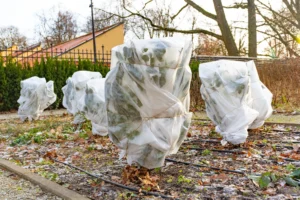Tree Felling Rules UK: A Comprehensive Guide
Are you considering purchasing property in the United Kingdom with trees on the land? Perhaps you’re planning a visit to your UK vacation home and want to prune some overgrown trees? Or maybe you’re an investor looking at UK forestry assets? Understanding the complex web of regulations surrounding tree felling in the United Kingdom is essential before you take action.
Tree protection in the UK is among the most stringent in Europe, with a robust legal framework designed to preserve the nation’s arboreal heritage. Unlike the relatively straightforward regulations in many US states, the UK system involves multiple layers of protection that can vary by location, tree species, and even individual tree designation.
This comprehensive guide will walk you through everything you need to know about UK tree felling regulations, helping you navigate the system whether you’re a property owner, developer, investor, or simply someone interested in UK land management practices.
Understanding Tree Protection in the UK: The Basics
Before delving into the specifics, it’s important to understand that the UK’s approach to tree protection is fundamentally different from what you might be accustomed to in the United States. In the UK, trees are often viewed as community assets rather than solely private property, even when they grow on land you own.
The UK government maintains this stance through various statutory protections that create a presumption against tree removal unless specific criteria are met. These protections exist to preserve the environmental, historical, and aesthetic value that trees provide to communities across the UK.
According to the UK government’s own statistics, these protective measures have helped maintain woodland coverage despite significant development pressures. As of 2023, the UK has approximately 3.24 million hectares of woodland, covering about 13% of the total land area—a figure that has slowly increased over recent decades thanks to strict controls on tree removal.
The Legal Framework: Who Regulates Tree Felling?
In the UK, tree protection is primarily regulated through local authorities (similar to county or city governments in the US), with oversight from national bodies like the Forestry Commission in England and Wales, Scottish Forestry in Scotland, and the Forest Service in Northern Ireland.
The principal pieces of legislation governing tree protection include:
- The Town and Country Planning Act 1990 (as amended): Provides the framework for Tree Preservation Orders
- The Forestry Act 1967 (as amended): Regulates commercial forestry and requires felling licenses
- The Wildlife and Countryside Act 1981: Protects trees in designated conservation areas
- The Conservation of Habitats and Species Regulations 2017: Provides additional protection for trees supporting protected wildlife
Additionally, specific protections exist for trees in:
- Conservation Areas
- Sites of Special Scientific Interest (SSSIs)
- Special Areas of Conservation (SACs)
- National Parks and Areas of Outstanding Natural Beauty (AONBs)
Each of these regulatory frameworks adds layers of protection that you must navigate before felling trees on UK property.
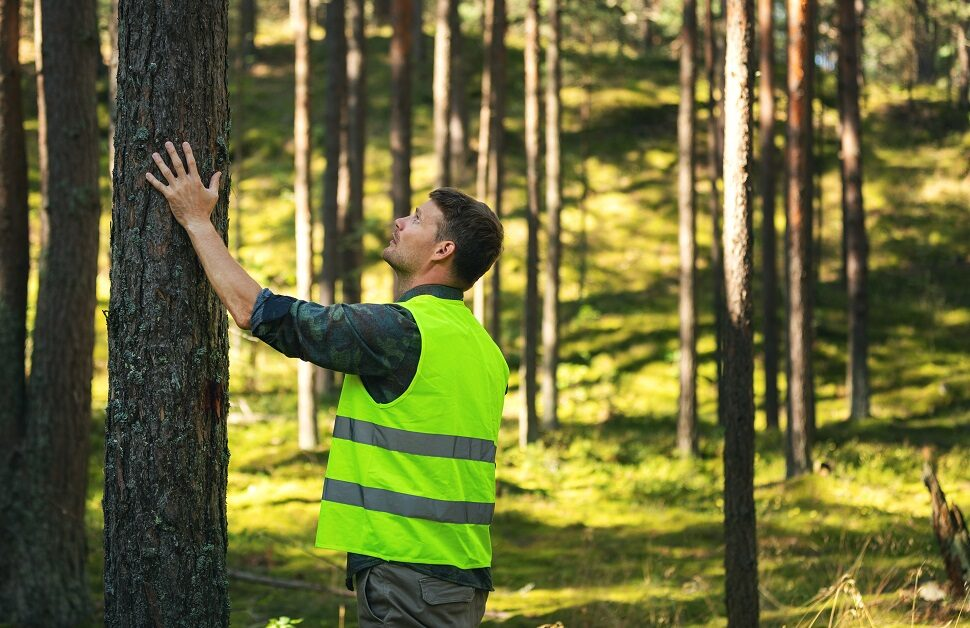
Tree Preservation Orders (TPOs): The Foundation of UK Tree Protection
Tree Preservation Orders (TPOs) form the cornerstone of the UK’s tree protection system. These are formal orders made by local planning authorities to protect specific trees, groups of trees, or woodlands that provide significant amenity value to the local area.
What Does a TPO Actually Do?
When a tree is covered by a TPO, it becomes a criminal offense to:
- Cut down the tree
- Top or lop the tree
- Uproot the tree
- Willfully damage the tree
- Willfully destroy the tree
These restrictions apply regardless of who owns the land where the tree is located. If you purchase property in the UK, any existing TPOs remain valid and binding on you as the new owner.
The penalties for violating a TPO can be substantial. If you’re convicted of destroying a tree protected by a TPO, you could face an unlimited fine calculated based on the tree’s value. For other offenses like unauthorized pruning, fines can still reach thousands of pounds.
How to Check if a Tree Has a TPO
If you’re considering purchasing property in the UK or planning work on trees on your existing UK property, here’s how you can check for TPOs:
- Contact the local planning authority (usually the district or borough council) for the area where the property is located
- Request a search of their TPO register (this is usually available online through the council’s website)
- For properties in England, you can also check the Planning Portal, which provides links to local authority information
The UK government recommends performing these checks as part of your due diligence before purchasing property or undertaking any tree work. You can find more information on the official UK government website: Tree Preservation Orders and trees in conservation areas.
Applying for Permission to Work on TPO-Protected Trees
If you discover that trees on your UK property are protected by TPOs, you’ll need formal permission before undertaking any work. Here’s the process:
- Submit a tree work application to the local planning authority using the standard application form available from the Planning Portal
- Provide details of the proposed work, including:
- The specific tree(s) involved (with reference to the TPO document)
- The nature and extent of the proposed work
- Reasons for the proposed work
- Evidence from a qualified arborist if the application is based on the tree’s condition
- Wait for a decision, which typically takes up to 8 weeks
The local authority will evaluate your application based on:
- The amenity value of the tree
- The health and condition of the tree
- The justification provided for the work
- Any relevant planning policies
If permission is granted, you typically have two years to carry out the approved work. The permission may also include conditions about how the work should be performed and requirements for replacement planting.
Conservation Areas: Additional Protection for Trees in Historic and Special Areas
Beyond TPOs, the UK provides special protection for trees in designated Conservation Areas. These are areas of special architectural or historical interest where the character and appearance are considered worthy of preservation.
Tree Protections in Conservation Areas
If you own property within a UK Conservation Area, all trees with a stem diameter greater than 75mm when measured at 1.5m from the ground are automatically protected—similar to having a TPO, even if no specific TPO exists.
Before conducting any work on trees in a Conservation Area, you must provide the local planning authority with 6 weeks’ notice of your intentions. This is done through a “Section 211 Notice” (named after the relevant section of the Town and Country Planning Act).
During this 6-week period, the authority can:
- Allow the work to proceed without objection
- Place a TPO on the tree to prevent the work
- Negotiate with you about the scope of the proposed work
If you don’t hear back within the 6-week period, you may proceed with the work as described in your notice. However, it’s always best to confirm this with the authority before beginning any tree work.
Identifying Conservation Areas
To determine whether your UK property falls within a Conservation Area:
- Check the local authority’s website, which should include maps of all designated Conservation Areas
- Contact the local planning department directly
- Review property deeds and surveys, which often mention Conservation Area status
Most local authorities in the UK maintain online interactive maps showing planning constraints, including Conservation Area boundaries. For properties in England, the National Heritage List for England also provides information about Conservation Areas.
Felling Licenses: Regulating Commercial and Larger-Scale Tree Removal
If you’re considering removing larger quantities of trees in the UK—particularly for commercial purposes or land management—you’ll likely need a felling license from the appropriate forestry authority.
When Do You Need a Felling License?
The requirement for a felling license applies when you plan to fell more than a specified volume of trees within a calendar quarter, regardless of whether the trees are protected by TPOs or located in Conservation Areas.
The current thresholds that trigger the need for a felling license are:
| Calendar Quarter Volume | License Requirement |
|---|---|
| Up to 5 cubic meters | No license required |
| 5-20 cubic meters | No license needed if for personal use only (e.g., firewood) |
| Over 5 cubic meters for sale | License required |
| Over 20 cubic meters regardless of purpose | License required |
These thresholds apply to the total volume of trees felled on your property, not individual trees. For context, a mature oak tree might contain 3-5 cubic meters of timber, so felling even a small number of large trees could require a license.
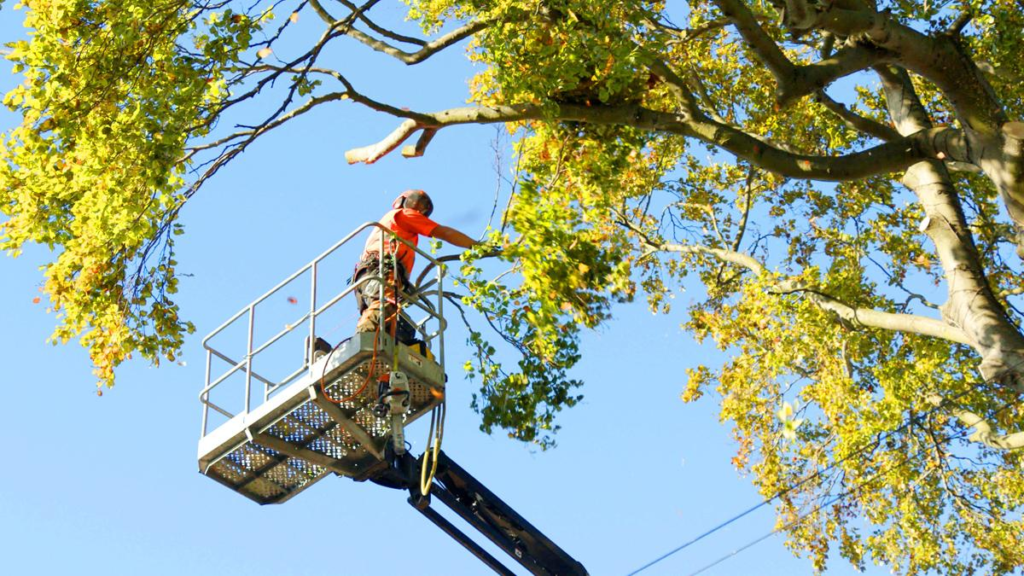
Exemptions from Felling License Requirements
Several exemptions exist where you can fell trees without a license, even above the volume thresholds. These include:
- Trees in gardens, orchards, churchyards, or designated public open spaces
- Trees with a diameter not exceeding 8 centimeters (measured at 1.3 meters from the ground)
- Trees that are dead, dying, or dangerous
- Trees that need to be removed to prevent the spread of a quarantine pest or disease
- Trees that need to be felled to comply with an Act of Parliament
- Trees that need to be removed for approved development with planning permission
However, even if these exemptions apply, TPOs or Conservation Area protections may still require you to obtain permission from the local planning authority.
Applying for a Felling License
If you determine that you need a felling license for tree work on your UK property, here’s how to apply:
- Complete the application form available from the relevant forestry authority:
- Forestry Commission in England
- Natural Resources Wales in Wales
- Scottish Forestry in Scotland
- Forest Service in Northern Ireland
- Provide a map showing the location of the trees to be felled
- Include details of any proposed restocking or replanting plans
- Pay any applicable fee (though many felling license applications are free)
The forestry authority will typically consult with the local planning authority and may visit the site before making a decision. The process generally takes 2-3 months from application to decision.
If granted, a felling license is usually valid for five years and may include conditions related to:
- The timing and method of felling
- Requirements for replanting
- Protection of wildlife and habitats
- Management of the site after felling
Protected Species: When Wildlife Adds Another Layer of Regulation
An often-overlooked aspect of tree work in the UK is the protection afforded to wildlife that may inhabit trees. Various species of birds, bats, and other animals are legally protected, and this protection extends to their habitats—including trees.
Birds and Nesting Season
All wild birds in the UK are protected under the Wildlife and Countryside Act 1981. It’s an offense to:
- Intentionally kill, injure, or take wild birds
- Damage or destroy a nest while it’s in use or being built
- Damage or destroy eggs
These protections are particularly relevant during nesting season, which generally runs from March to August. During this period, any tree work—even on trees that are otherwise unprotected—should be preceded by a thorough check for active nests. If nests are found, work typically needs to be delayed until the young have fledged.
Bats and Their Roosts
All species of bats in the UK receive strict protection under both domestic and European legislation. It’s illegal to:
- Deliberately capture, injure, or kill bats
- Damage or destroy bat roosts (even when bats aren’t present)
- Disturb bats in their roosts
Many bats roost in trees, particularly those with features like woodpecker holes, loose bark, or splits. Before undertaking any tree work, you should consider whether bats might be present. If there’s any possibility of bat roosts, you should:
- Commission a bat survey from a licensed ecological consultant
- If bats are present, apply for a mitigation license from:
- Natural England (in England)
- Natural Resources Wales (in Wales)
- NatureScot (in Scotland)
- Northern Ireland Environment Agency (in Northern Ireland)
Failure to comply with these protections can result in severe penalties, including unlimited fines and up to six months imprisonment.
Other Protected Species
Beyond birds and bats, other protected species that might use trees include:
- Red squirrels
- Dormice
- Certain insects like the stag beetle
The presence of these species may not prevent tree work entirely but could require specific mitigation measures and licenses.
Practical Guide: Planning Tree Work on Your UK Property
With all these regulations in mind, how should you approach tree work on your UK property? Here’s a practical step-by-step guide:
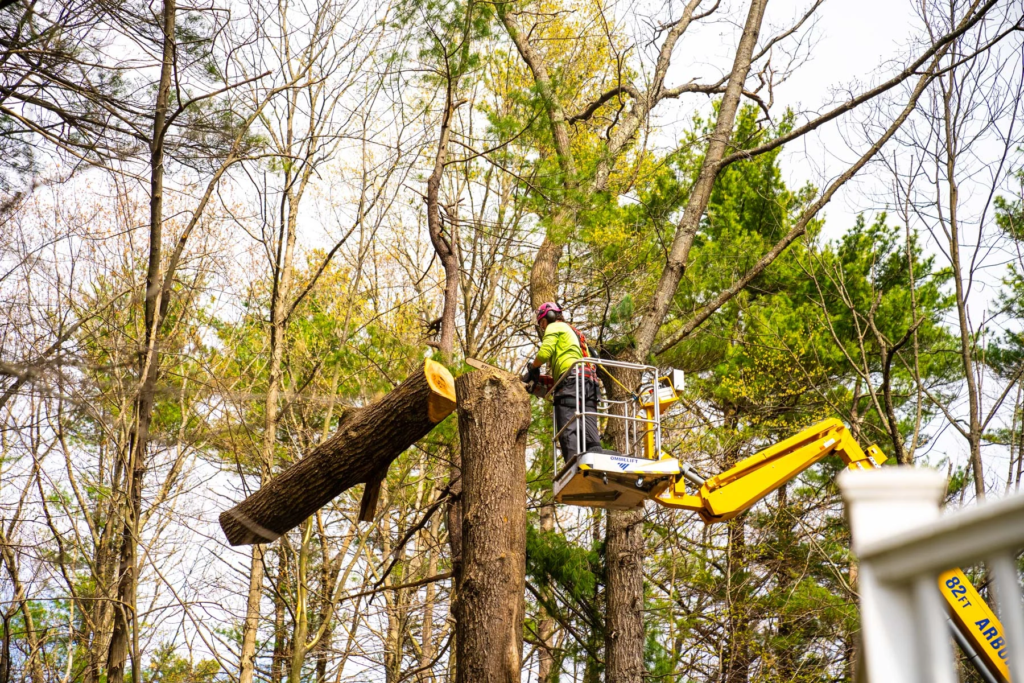
Step 1: Tree Assessment and Documentation
Before planning any tree work:
- Identify and document all trees on your property, noting:
- Species
- Approximate age
- Condition
- Location relative to buildings and boundaries
- Photograph trees from multiple angles before any work is planned
- Consider hiring a professional arborist for a thorough tree survey, which can:
- Accurately identify species
- Assess tree health and stability
- Provide recommendations for management
- Help identify protected species concerns
Step 2: Check for Existing Protections
Once you have a clear inventory of your trees:
- Check for TPOs by contacting the local planning authority
- Determine if your property lies within a Conservation Area
- Verify whether the property falls within any other designated areas (SSSI, National Park, etc.)
- Calculate the approximate volume of timber if multiple trees are involved
This information will determine which permissions you need to seek before proceeding.
Step 3: Prepare and Submit Applications
Based on your findings:
- For TPO trees or trees in Conservation Areas:
- Complete the relevant application form from the local authority
- Include clear details of proposed work
- Attach supporting documentation (photos, arborist reports, etc.)
- For larger volumes requiring a felling license:
- Submit application to the relevant forestry authority
- Include maps and restocking plans if required
- For trees potentially housing protected species:
- Commission necessary surveys
- Apply for mitigation licenses if required
Step 4: Wait for Approvals
It’s crucial not to begin work until all necessary approvals are in place:
- TPO applications typically take up to 8 weeks
- Conservation Area notices require a 6-week waiting period
- Felling license applications usually take 2-3 months
- Protected species licenses can take several weeks or months
Planning your tree work well in advance is essential given these timeframes.
Step 5: Hire Qualified Professionals
Once approvals are in place:
- Hire qualified tree surgeons or forestry contractors who:
- Hold appropriate insurance
- Follow industry best practices
- Understand and will comply with any conditions attached to your permissions
- Schedule work outside nesting season (September to February) where possible
- Ensure contractors have copies of all relevant permissions and understand any conditions
Step 6: Comply with Post-Work Requirements
After tree work is completed:
- Implement any replanting or restocking required by your permissions
- Maintain records of the work completed
- Monitor the health of remaining trees and new plantings
Special Considerations for Different UK Regions
While the fundamental principles of tree protection apply throughout the UK, there are important regional variations you should be aware of:
England
In England, the Forestry Commission administers felling licenses, while local authorities manage TPOs and Conservation Areas. Recent policy developments in England include:
- The Environment Act 2021, which strengthens biodiversity requirements
- Local Nature Recovery Strategies that may influence tree management decisions
- Development of the England Trees Action Plan 2021-2024
The Forestry Commission in England has also introduced digital felling license applications, streamlining the process for landowners. More information is available on the UK Government’s Forestry Commission page.
Scotland
Scotland has some of the most ambitious woodland expansion targets in the UK, aiming to increase forest cover from 19% to 21% by 2032. This affects how applications for tree removal are viewed:
- Scottish Forestry generally expects compensatory planting for trees removed
- The planning process places greater emphasis on woodland strategies
- The Nature Scot organization plays a key role in protected species considerations
Scottish regulations are slightly more streamlined, with integration between different permission types. Details are available from Scottish Forestry.
Wales
Natural Resources Wales takes a unified approach to natural resource management, combining the functions that in England are split between different agencies:
- Single application processes for multiple permissions where possible
- Greater emphasis on Welsh language requirements in applications
- The “Area Statements” approach to environmental planning affecting tree management
Welsh policy strongly emphasizes the well-being of future generations in decision-making about trees. More information is available from Natural Resources Wales.
Northern Ireland
The Forest Service in Northern Ireland operates under somewhat different legislation:
- The Forestry Act (Northern Ireland) 2010 provides the primary legal framework
- Felling licenses operate under different volume thresholds
- Different application processes apply for protected trees
Northern Ireland has its own online system for checking tree protection status, available through the Department of Agriculture, Environment and Rural Affairs.
Common Scenarios and Their Regulatory Requirements
To help you understand how these regulations might apply to specific situations, here’s a table summarizing common scenarios:
| Scenario | TPO Required? | Conservation Area Notice? | Felling License? | Protected Species Consideration? |
|---|---|---|---|---|
| Pruning a garden tree | Only if TPO exists | Only if in Conservation Area | No | Yes, especially during nesting season |
| Removing a dead tree | Notification required | Notification required | Generally exempt | Yes, may still provide habitat |
| Felling 3-4 large trees for personal firewood | If TPO exists | If in Conservation Area | Possibly, depending on volume | Yes |
| Clearing woodland for development | If TPO exists | If in Conservation Area | Likely yes, unless planning permission granted | Yes, likely require surveys |
| Emergency work for safety | Exempt but retrospective notification required | Exempt but retrospective notification required | Exempt | Consider if time allows |
| Disease control | Notification with evidence | Notification with evidence | May be exempt with evidence | May still apply |
The Economics of Tree Management in the UK
Understanding the financial aspects of tree management in the UK can help you make informed decisions about your property:
Costs of Compliance
The administrative costs of complying with UK tree regulations include:
- Application fees: While many applications are free, some local authorities charge for TPO applications (typically £75-200)
- Survey costs: Professional tree surveys range from £250-1,000 depending on property size
- Ecological surveys: Bat surveys typically cost £500-1,500
- Professional advice: Planning consultants specializing in tree issues charge £75-150 per hour
Costs of Tree Work
The physical work on trees comes with its own costs:
- Tree pruning: £100-500 per tree depending on size and accessibility
- Tree felling: £400-2,000 per tree for large specimens
- Stump removal: £100-400 additional
- Replacement planting: £75-400 per new tree including materials and labor
These costs typically increase by 30-50% when working on protected trees due to additional administrative requirements and the need for specialized contractors.
Potential Financial Benefits
Despite these costs, there can be financial benefits to proper tree management:
- Property value: Well-maintained mature trees can increase property values by 5-18%
- Timber value: Quality hardwood trees can be worth £500-2,000 per tree if harvested correctly
- Grant funding: Various UK grants support woodland management and new planting
- Tax benefits: Working woodlands may qualify for inheritance tax relief and income tax advantages
Recent Changes and Future Trends in UK Tree Regulation
UK tree regulations continue to evolve, with several recent developments and emerging trends:
Recent Changes
- Environment Act 2021: Introduced biodiversity net gain requirements for development, affecting how tree removal is mitigated
- Agriculture Act 2020: Created new incentives for farmers and landowners to plant and maintain trees
- Planning for the Future White Paper: Proposed streamlining of planning permissions while maintaining environmental protections
- England Trees Action Plan: Set targets for tree planting and protection nationwide
Emerging Trends
- Climate change emphasis: Increasing recognition of trees’ role in carbon sequestration is influencing decision-making
- Urban tree protection: Growing focus on preserving trees in urban environments where they provide multiple benefits
- Ancient woodland protection: Strengthening of protections for the UK’s most valuable woodland ecosystems
- Digital transformation: Movement toward online application systems and tree registers
- Biodiversity focus: Shift from viewing trees in isolation to considering their role in broader ecosystems
These changes suggest that tree protection in the UK will likely become more sophisticated but potentially more streamlined in coming years. The government has indicated a desire to make processes more efficient while maintaining or strengthening actual protections.
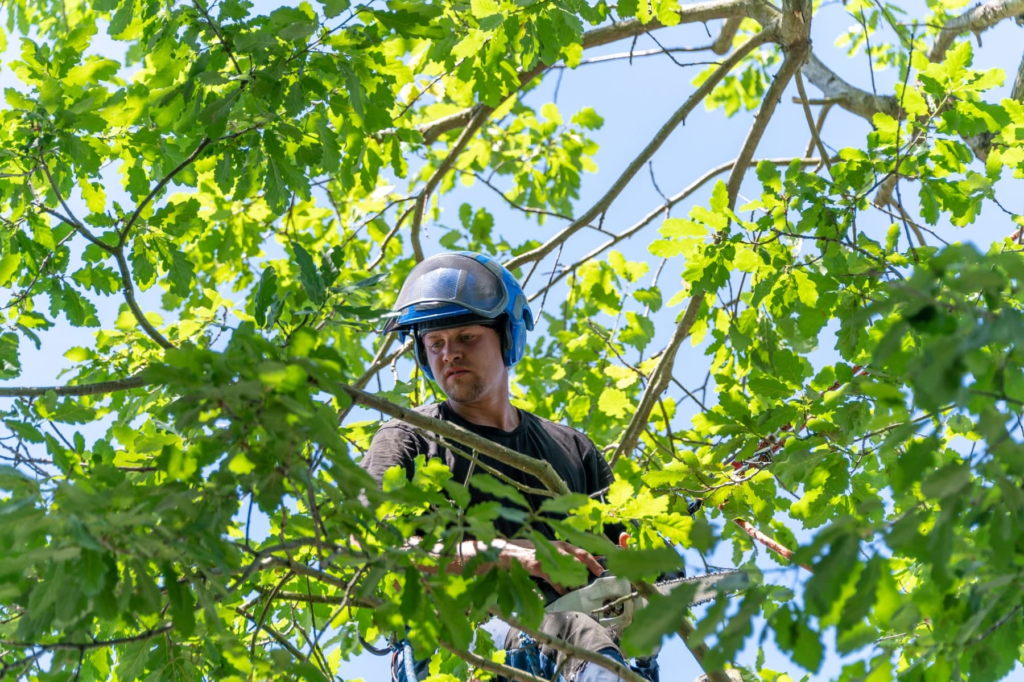
Conclusion: Navigating the UK’s Tree Protection System Successfully
The UK’s approach to tree regulation reflects a society that deeply values its natural heritage and recognizes the multiple benefits that trees provide—from environmental services to aesthetic and cultural contributions. While these regulations may initially seem complex, especially from an American perspective, they form a coherent system designed to balance private property rights with public interests.
Successfully navigating these regulations requires:
- Early planning: Research protections well before you need to undertake tree work
- Professional input: Engage qualified arborists and ecological consultants when needed
- Documentation: Maintain clear records of all trees, applications, and work undertaken
- Communication: Maintain open dialogue with regulatory authorities throughout the process
- Patience: Allow sufficient time for all necessary permissions to be obtained
By understanding and working within the UK’s regulatory framework, you can manage trees on your property effectively while contributing to the preservation of the UK’s arboreal heritage. Whether you’re a property owner, developer, or investor, this knowledge will help you make informed decisions and avoid costly mistakes when dealing with trees in the United Kingdom.
For the most current and detailed information, always consult the relevant authorities’ websites and consider seeking professional advice for specific situations. The UK Government’s main portal for tree-related information can be found at GOV.UK Guidance on Tree Preservation Orders.
Additional Resources for US Owners of UK Property
For US citizens who own or are considering purchasing property in the UK, several resources can provide valuable assistance with tree management issues:
- Royal Forestry Society: Offers guidance on woodland management and can connect you with local experts
- Arboricultural Association: Maintains a directory of qualified tree surgeons and consultants
- Woodland Trust: Provides advice on tree planting and management for conservation
- Country Land and Business Association: Represents landowners’ interests and offers advice to members
- The Tree Council: Coordinates community action on trees and provides educational resources
These organizations can provide practical advice beyond the regulatory framework, helping you to not just comply with rules but actively enhance the arboreal assets on your UK property.



